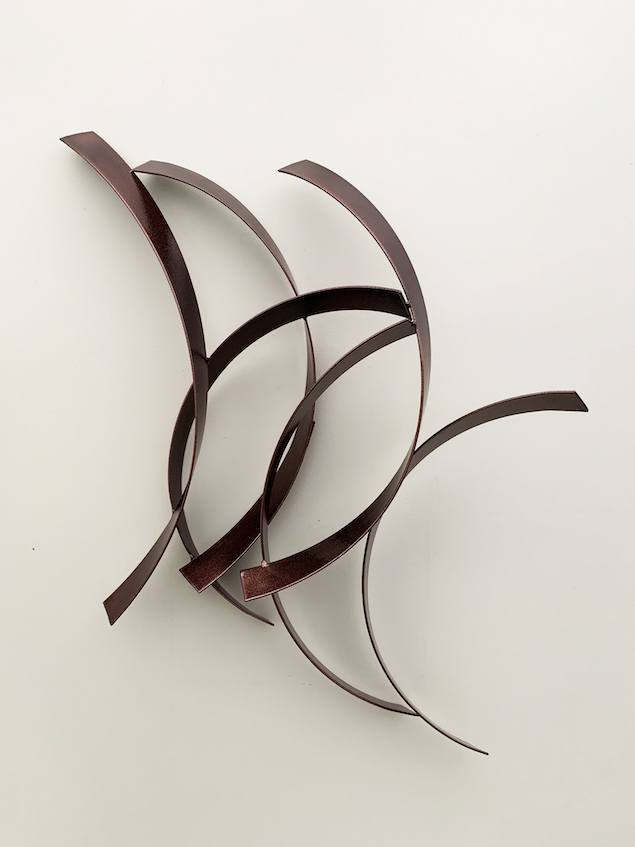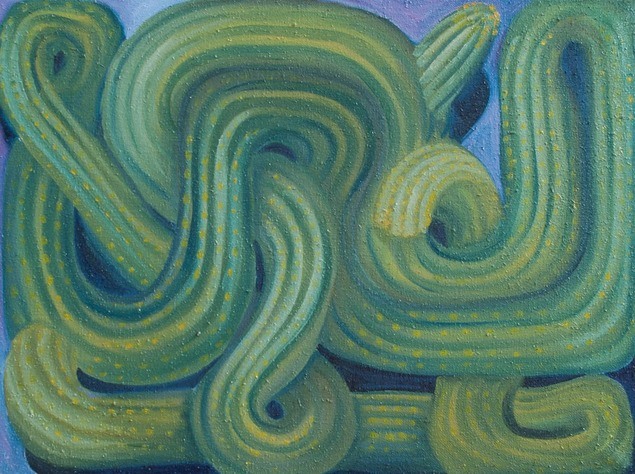L'Art nouveau était une rupture exotique, décadente et finalement contemporaine avec la tradition artistique. En renonçant à l'historicisme fatigué et dépassé de l'architecture et du design classiques, les artistes ont délibérément décidé de révolutionner l'art et de créer quelque chose de nouveau – d'où l'Art nouveau.
Le mouvement s'est développé régulièrement au cours des années 1890 et a traversé les frontières. Un ensemble passionnant et séduisant de peintures, de sculptures, de métaux, de verres, de bijoux et de céramiques est né de cette période, des œuvres d'art qui continuent d'influencer les artistes et les créateurs contemporains.

Qu'est-ce qui définit l'Art nouveau ?
L'Art nouveau est un style fascinant et énergique dans le domaine des arts visuels qui s'étend du début des années 1890 à la Première Guerre mondiale. Les artistes de l'Art nouveau, inspirés par les formes végétales et la nature, ont pris des sujets organiques et les ont aplatis et abstraits pour en faire des motifs sophistiqués, sinueux et fluides.
L'accent mis sur la fluidité des lignes, les formes géométriques, les compositions asymétriques et une synthèse audacieuse de la structure et de la décoration sont autant de caractéristiques qui les définissent, sans pour autant être exhaustives.

Une brève histoire de l'Art nouveau
L'Art nouveau est apparu à une époque d'immenses progrès technologiques. Au lendemain de la révolution industrielle, l'identité moderne de l'Europe était celle de l'industrie et de la production de masse. Le mouvement a à la fois embrassé la révolution industrielle et s'en est défendu, célébrant l'artisanat et le talent artistique tout en incorporant et en stylisant l'automatisation et l'industrialisation. Aux États-Unis, l'ère progressiste était également bien engagée.
William Morris (1834 - 1896), parmi d'autres grands noms de l'Art nouveau - dont Alphonse Mucha, Gustav Klimt, Henry de Toulouse-Lautrec et Oscar Wilde - est souvent considéré comme l'ancêtre philosophique du mouvement. Morris, idolâtré dans le monde entier pour sa glorieuse renaissance de l'artisanat traditionnel, a déclaré que l'Art nouveau devait donner aux gens du plaisir dans le banal. En d'autres termes, il s'agit d'insuffler une nouvelle esthétique à la vie quotidienne.
Le mouvement rejette les excès de l'ère victorienne et ses caractéristiques ornementales encombrantes. En conséquence, une résurgence intrépide de l'art et de l'artisanat britanniques a vu le jour. En faveur de saveurs nationales et organiques distinctes, les fleurs évocatrices et les tourbillons évasés abondent.

Où l'Art nouveau a-t-il vu le jour ?
L'Art nouveau ne s'est pas limité à un lieu ou à une époque, mais a prospéré dans toute l'Europe et aux États-Unis. En tant qu'approche unificatrice et universelle de l'art, l'Art nouveau a réuni les beaux-arts et les arts appliqués - du mobilier et de l'architecture aux illustrations de livres – pour créer des "œuvres d'art totales", ou Gesamtkunstwerk en allemand.
La galerie parisienne Maison de l'Art Nouveau, propriété de l'influent marchand d'art Siegfried Samuel Bing, a toutefois joué un rôle déterminant dans l'expansion du terme. Le style éponyme a cependant pris plusieurs noms, dont Le Style Métro, Art Belle Époque, et même Le Style Moderne.
Au même moment, en Autriche, le mouvement de la Sécession commence à faire parler de lui à Vienne. Les Sécessionnistes renoncent à l'establishment artistique conservateur d'Europe centrale. Les avant-gardistes viennois introduisent un nouveau style ombragé avec des motifs décoratifs plats, des contrastes et des lignes maîtrisées et plongeantes.

Pourquoi l'Art nouveau était-il si
populaire ?
La présence internationale de l'Art nouveau témoigne de l'abolition réussie des hiérarchies entre les arts. Dépassant l'art auparavant dominé par le néoclassicisme, le mouvement a permis aux artistes du monde entier d'enrichir la vie du public, notamment en améliorant la conception des espaces ordinaires et des objets domestiques.
Comme l'Art nouveau était répandu dans les lieux publics tels que les gares, les salons de thé et les magasins, le domaine public et le domaine privé s'appropriaient le style sur un pied d'égalité. Une fois de plus, cela souligne la nature unifiée et inclusive de l'Art nouveau, une forme d'art qui doit être appréciée par tous. Le mouvement a maintenu son rythme et sa popularité jusqu'à la Première Guerre mondiale, où il a commencé à s'essouffler.

Quelle est la différence entre l'Art déco et l'Art nouveau ?
Qu'est-ce qui a suivi ? On parle souvent indifféremment d'Art déco et d'Art nouveau. Pourtant, ces deux mouvements diffèrent à la fois sur le plan chronologique et stylistique. L'Art nouveau est généralement considéré comme le premier style d'art moderne, apparu vers la seconde moitié du XIXe siècle. L'Art déco est apparu vers les années 1920, alors que l'attrait ardent de l'Art nouveau s'éteignait peu à peu.
Contrairement à la prédominance des formes organiques et des thèmes floraux de l'Art nouveau, l'Art déco incarne l'esprit industriel du début du XXe siècle. L'Art déco se concentre sur les lignes verticales dures, les motifs tordus et les formes rectilignes.

L'Art nouveau aujourd'hui
L'Art nouveau a servi de tremplin aux artistes modernes et son héritage continue d'inspirer aujourd'hui. Avec un soupçon de Street Art ou d'Abstraction les peintres et graveurs émergents, tels que Lowdown et Clare Halifax, rendent hommage à ce mouvement.
En effet, certains critiques affirment que le style a connu un renouveau dans les années 60 et à nouveau au cours des 20 dernières années, les artistes incorporant dans leurs œuvres des motifs floraux opulents et des lignes élégantes et sinueuses. Mais peut-être le style ne s'est-il jamais éteint ? Il semblerait que l'Art nouveau continue d'évoluer et de s'épanouir au fil du temps et dans le monde entier, dans la décoration d'intérieur, la publicité et au-delà.

